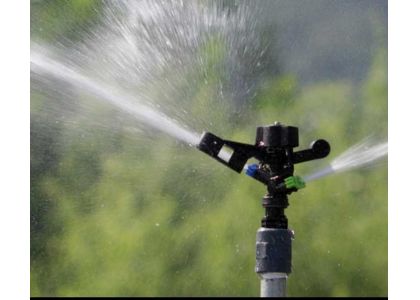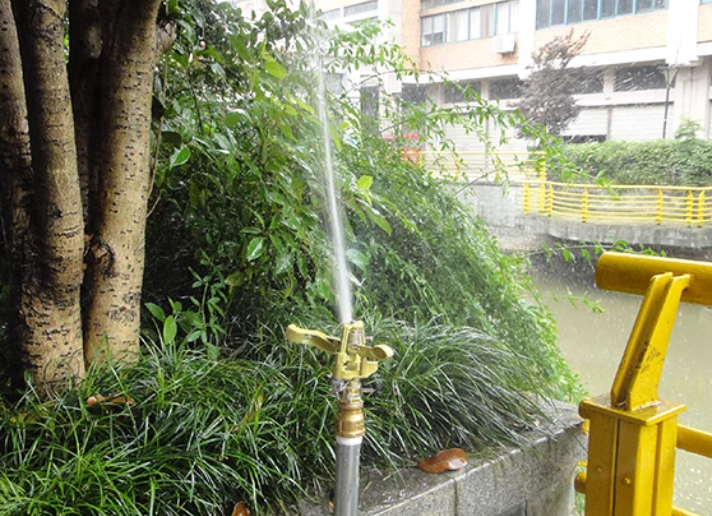
A Complete Guide to Garden Irrigation Sprinklers: How to Choose the Best System for Your Garden
Meta Description: Discover everything you need to know about garden irrigation sprinklers. Learn how to choose the best system for your garden, water conservation tips, and maintenance advice to ensure a healthy garden year-round.
A healthy, flourishing garden requires regular watering, and one of the most efficient ways to achieve this is through garden irrigation sprinklers. Whether you’re a beginner gardener or a seasoned pro, investing in the right sprinkler system can save you time, money, and ensure your plants receive the consistent care they need. In this guide, we’ll walk you through everything you need to know about garden irrigation sprinklers, from choosing the right system to installation tips and maintenance tricks.
Garden irrigation sprinklers are devices designed to evenly distribute water across your garden. They can be used to water lawns, flower beds, vegetable gardens, and shrubs. Sprinklers help simulate natural rainfall, ensuring that your plants receive consistent moisture while conserving water.
Irrigation sprinklers come in various types, each suited to different garden sizes, plant types, and water pressure levels. Some are designed for small, concentrated areas, while others cover larger spaces with a more dispersed water pattern.
Choosing the right sprinkler system is crucial for maximizing water efficiency and ensuring your plants thrive. Here are the most common types of garden irrigation sprinklers:
Stationary sprinklers remain in one position and are ideal for small to medium-sized gardens. They distribute water in a circular pattern and can be adjusted for different water coverage areas. These are often used for flower beds and lawns.
Oscillating sprinklers move back and forth, distributing water in a rectangular pattern. They are perfect for covering larger areas such as lawns or vegetable gardens. Their coverage is adjustable, and they offer good even distribution.
Rotary sprinklers feature rotating heads that spray water in a circular motion. They are typically used for larger areas and are great for lawns. These sprinklers can cover more ground and are often more water-efficient compared to stationary types.
Drip irrigation is a more precise method that delivers water directly to the base of plants, minimizing waste. This system is ideal for garden beds, vegetable patches, or areas where water conservation is a priority. It ensures that water is delivered right to the root zone, where it’s needed most.
Pop-up sprinklers are hidden beneath the soil surface and emerge when the system is turned on. These sprinklers are ideal for lawns, as they provide coverage without obstructing foot traffic or mowing activities.
When selecting a sprinkler system, consider these key factors:
Larger gardens may require more powerful or multiple sprinklers, while smaller areas may only need a single sprinkler or a drip system.
Check your water pressure, as different sprinklers operate at different pressure levels. Rotary and oscillating sprinklers typically require higher water pressure, while drip systems can work with lower pressure.
If you are concerned about water usage, opt for a drip irrigation system, as it uses less water by delivering moisture directly to the root zone. Alternatively, oscillating and rotary sprinklers can be more water-efficient than traditional stationary models.
Different plants have different watering needs. Lawns and grass areas require more water and broader coverage, while flower beds and vegetable gardens benefit from drip irrigation or more targeted sprinkler systems.
Installing a garden irrigation sprinkler system can be a DIY project, but it requires careful planning. Here are the basic steps to follow:
Assess Water Requirements: Determine how much water your plants need, and decide on the type of sprinkler system that will best meet those needs.
Design Your Layout: Sketch out your garden and plan the sprinkler placement. Make sure to leave space for each sprinkler to cover the desired area without overlap or under-watering.
Install the Sprinklers: If you're using a drip system, install tubing and emitters around the root zones of your plants. For pop-up or stationary sprinklers, ensure they're spaced appropriately for uniform coverage.
Connect to Water Supply: Attach your sprinkler system to your water source, using hoses, pipes, or connectors. Ensure all fittings are secure to prevent leaks.
Test the System: Turn on the water and test the system for coverage and efficiency. Adjust sprinkler heads as needed to ensure even water distribution.
Maintaining your sprinkler system is key to ensuring long-term performance. Here are a few tips to keep your system running smoothly:
Dirt and debris can clog sprinkler nozzles, reducing their efficiency. Regularly clean the sprinkler heads and check for blockages.
Inspect the hoses, pipes, and sprinkler heads for leaks. A small leak can waste a significant amount of water over time.
As the seasons change, so do the water needs of your plants. Adjust the run time of your sprinklers based on the season and rainfall levels.
In colder climates, it’s important to winterize your sprinkler system to prevent freezing. Drain the pipes and disconnect the system to protect it from damage during the winter months.
Water conservation is becoming increasingly important, and efficient irrigation systems are a great way to reduce your garden's water usage. Here are some tips to maximize water conservation:
A garden irrigation sprinkler system is an excellent investment for anyone looking to maintain a beautiful, thriving garden with minimal effort. By choosing the right sprinkler type for your garden, installing it properly, and maintaining it regularly, you can ensure your plants receive the right amount of water without waste. Whether you’re looking to water a small flower bed or a large lawn, there’s a sprinkler system that’s perfect for your needs.

Call to Action: Ready to upgrade your garden watering system? Browse our selection of garden irrigation sprinklers and find the perfect solution for your garden’s needs today!